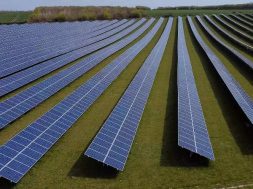How a global solar drive will boost silver prices
Silver prices are likely to gain in the next five years as demand for solar panels grows on a concerted drive by governments to reduce global carbon dioxide emissions, an analyst said. Silver, a key component of solar cells as it is the best metallic conductor of heat and electricity, has seen a slump in prices to a three-month low this week in line with a broad-based decline in gold prices. At about USD 14 an ounce currently, prices are 10 percent lower year-to-date. While the solar industry just accounts for just 6 percent of overall physical silver demand now, global solar capacity is growing at an average rate of 53 percent a year in the last decade, underscoring future growth potential, said London-based Capital Economics’s Simona Gambarini in a note recently.
About 2.8 million ounces of silver are needed to generate one gigawatt of electrical capacity from solar energy. Prospects for silver are positive even as renewable energy subsidies are being scaled back in some parts of the developed world as there is still considerable scope for more investment in emerging economies, particularly in China where the government is trying to cut down on pollution to quell social discontent. China is likely to account for about half of the growth in solar panel production in the next few years, she said. The country will also increase its installed solar capacity more than five times from 2014 to 2020, she noted. Although there is ongoing research to substitute the use of silver in solar cells to cut costs, they are still in early stages and may take years to have a material impact, wrote Gambarini. Low silver prices now are also likely to dampen enthusiasm for investment in the research for cheaper substitutes.
Related posts:
- KTR to inaugurate 200 MW automated solar module plant on Jul 29
- In the race for cost reduction are you thinking about long term performance of your PV projects?
- SoLayTec ships new ALD order and increases margin for its customer
- Solar Frontier Achieves World Record Thin-Film Solar Cell Efficiency of 23.35%
















